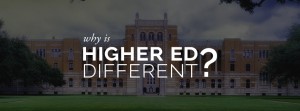Here we will go into more detail on the deployment stage—ranging from the types of training programs you should provide to how to best communicate to your end users. With the right knowledge and tools, you’ll be able to deliver a truly valuable product to your organization.
Communicating with Users in Higher Ed: Straight From the Source
We recently interviewed and surveyed a group of students, faculty and university staff about their experiences with IT implementations, to discover how end users in Higher Ed prefer to be communicated with. Responses were varied, but many were accompanied by suggestions.
Why Is Higher Ed Different?: Part 7 – Staffing Processes
Our Why is Higher Ed Different? series is coming to a close, and there’s no better topic to wrap it up with than the university IT staffing process. It can be difficult to transition from another IT field to Higher Ed and get the experience that most universities look for.
How to Migrate to an Online LMS Part 3: The Configuration Stage
Before any data can be migrated over to your new LMS, you will need to configure it to meet the specific needs of your institution. In terms of course data, you’ll need to determine how your catalog will be structured and what types of courses will be offered.
Why is Higher Ed Different? Part 6: Software, Products, and Systems
Colleges and universities require administrative tools, human resource software, and security systems, just like any business, but they also service thousands of students and hundreds of faculty that need to be considered when creating deliverables in Higher Ed IT.
- « Previous Page
- 1
- …
- 13
- 14
- 15
- 16
- 17
- 18
- Next Page »


